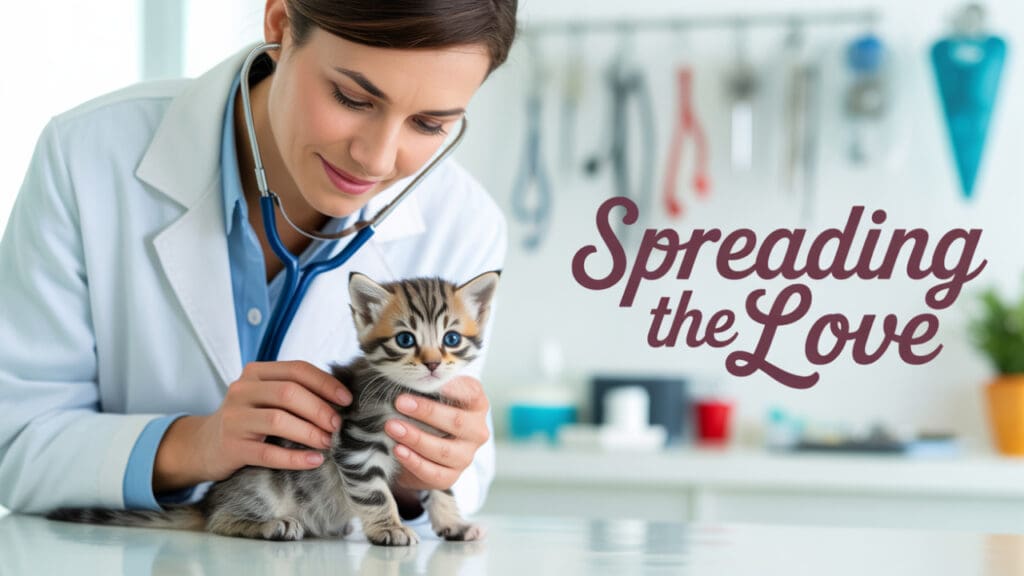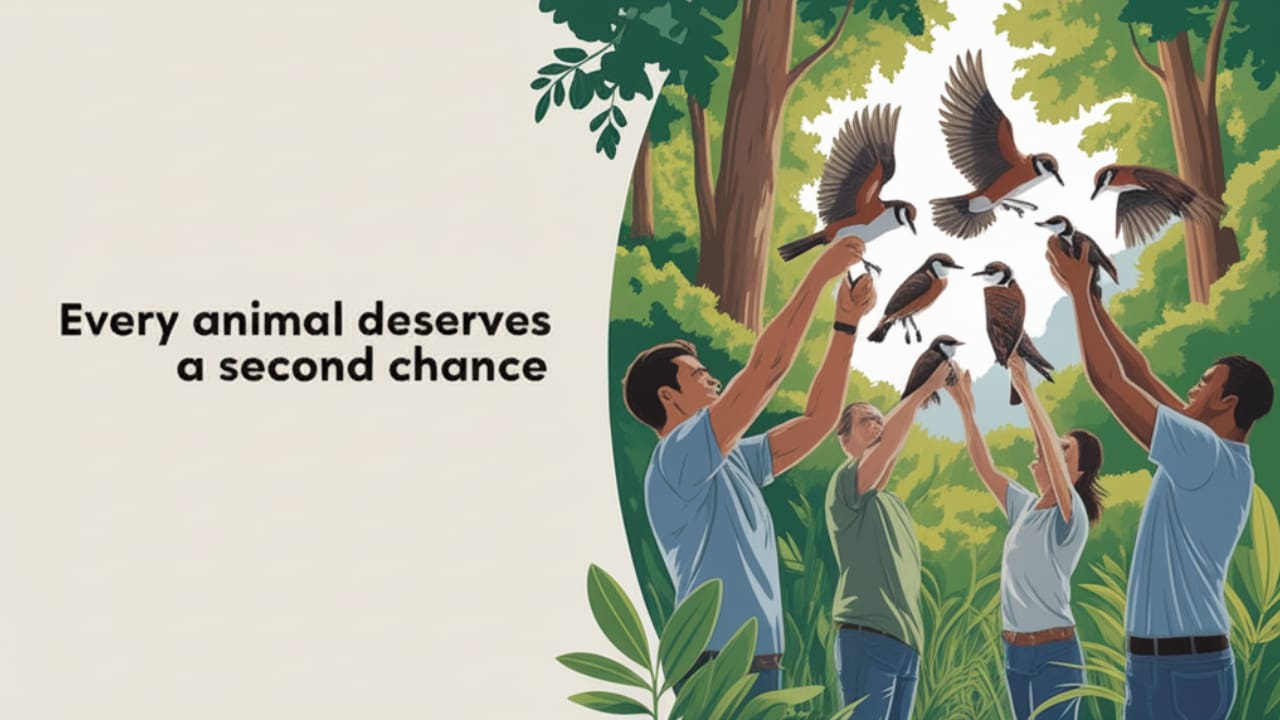Animal Rescue and Care (2025): Expert Guidance on Safe Rescue Steps, Rehabilitation, Community Support, and Mistakes to Avoid
You’ve probably heard of it. You might have even seen it yourself. That heartbreaking scene of a frightened dog darting through the traffic. A malnourished cat hiding in an alley. Or a bird tangled in plastic, struggling to break free.
These animals don’t deserve to live (or suffer) like this. And you should know that the right and safe response can make the difference between life and death for these creatures.
At its core, animal rescue and care is more than just pulling an animal out of harm’s way. You’ll need to think about safe handling, professional medical attention, and long-term rehabilitation. These are some of the things that most people underestimate.
Veterinary experts say that a good number of rescued animals suffer from untreated conditions. These include infections and malnutrition. And treating them isn’t cheap at all. Shelters warn that emergency care can cost hundreds of dollars per case.
You may think that once an animal is rescued, it automatically means they are safe. But that’s not true. In fact, the work has only just begun. The animal will need to go through rehabilitation, and this needs to be done right.
Now, let’s take a look at the safe rescue steps in this article. We should also understand the hidden costs involved in this process. Additionally, you’ll see why handling wildlife without training can be a common mistake most people make.
Read on to find out how to act responsibly and effectively when an animal needs your help.
Crisis Protocols for Common Emergency Scenarios

When you encounter specific rescue situations, having clear protocols can mean the difference between life and death. Here are evidence-based responses for the most common scenarios:
Found an Animal Hit by a Car
- Immediate actions: Ensure your safety first – move away from traffic and turn on hazard lights.
- Call emergency veterinary services immediately – hit-by-car cases can cost $250-$8,000+ for treatment.
- Cover the animal with a blanket to reduce stress and prevent shock.
- Critical rule: Do NOT move the animal unnecessarily as spinal injuries are common.
Found a Baby Animal (Fawn, Baby Bird, Kitten)
- The Number 1 rule: Observe from a distance for at least one hour. Mother animals often leave babies while foraging and return later.
- When to intervene: Only if the baby is injured, in immediate danger, or the mother hasn’t returned after 4-6 hours
- When to leave alone: If the baby appears healthy and isn’t crying continuously
Found an Animal Trapped (in drain, fence, or debris)
- Do NOT attempt to cut or force the animal free with tools.
- Your role is to calm and stabilize the animal while calling professionals.
- Contact animal control or fire department for technical rescue equipment.
- Stay with the animal and provide verbal reassurance from a safe distance.
Encountering an Aggressive or Rabies-Suspect Animal
- Rabies can be transmitted through bites, scratches, or saliva contact with open wounds
- Critical safety rule: Never approach any animal showing aggressive behavior.
- Note the animal’s location, behavior, and description.
- Call animal control or police immediately.
What Is Animal Rescue and Care? Key Concepts Explained

First things first, the term “animal rescue and care” means more than just taking an animal out of a bad situation and calling it a day. The word “care” plays an important role.
There’s a structured process involved to help protect these vulnerable, frightened creatures you’ve rescued. And this process should focus on restoring the animals’ health. Hopefully, it will give them a second chance at life.
Now, there are three core practices. The first one is to identify the animal that’s in distress. Second is removing the poor creature safely from harm. And third, which is possibly the most understated, is to provide the animal immediate (and ongoing) attention.
The word “care” means feeding, sheltering, and rehabilitating the creature until they can return to their natural environment. Ideally, otherwise, they can be adopted into a safe home if they happen to be domestic animals.
You should understand that getting a distressed animal out of a critical situation is nothing but the beginning of a (possibly) long caring process. Vet experts say that these animals will need the right medical treatment for their injuries, malnutrition, or disease.
And beyond health care, you can expect these rescued animals to need emotional rehabilitation as well. For instance, a dog rescued from a hoarding or abuse case may be extremely anxious around people. And they are likely to show some fear-based behaviors.
This, then, requires patient handling and structured socialization. Think of it as animal rescue and rehabilitation (both physical and psychological recovery).
How to Rescue Animals Safely: Step-by-Step Guidance

Yes, rescuing an animal can be quite rewarding. However, keep in mind that you’ll need to do so carefully. And you’ll need the right amount of preparation.
Always remember this rule: safety comes before speed. That animal you’re trying to save may be in pain or fear. And they are most likely going to lash out at you. Now, let’s take a look at the important steps you should take:
- Step 1 (Assessment): Observe and see if the animal is injured. Are they trapped? Or are they in danger because of the traffic, a predator, or the weather? See if you need to do something right away or call for help.
- Step 2 (Personal Safety): You should always put on some safety gear before going in to help. Try using protective gloves, towels, or blankets. These tools can help reduce the risk of bites or scratches. You really don’t want to get hurt doing a good deed.
- Step 3: (Containment): Now, keep yourself calm. And make sure you gently guide the animal into a secure carrier or box. Don’t rush, and be patient. You might need to try a few times before getting the animal to warm up to you.
- Step 4: (Professional Assistance): This is the last step and possibly one of the most important. Call a vet, shelter, or animal welfare group after rescuing the animal. You’ll need the specialized support for taking care of the animal.
A fair warning. If you decide to take up the full responsibility of taking care of the animal, cost is something you’ll really need to consider. Emergency vet visits, vaccinations, and rehabilitation can often set you back hundreds of dollars. And you’ll need to commit your time and energy to doing so, possibly long-term.
But don’t worry just yet. Many communities do partner with local SPCA branches or volunteer networks that subsidize these expenses. Getting these professionals involved can help make sure the animal rescue and rehab process is affordable and effective.
Also, another fair warning. Do not attempt to rescue wildlife without permits or training. Experts warn that some of these wild animals need very specialized care, and they can even transmit disease. So, DIY interventions can be quite dangerous. In such cases, you should only try to stabilize the animal safely and call a licensed wildlife rescue professional for assistance.
Zoonotic Disease & Safety: Protecting Yourself During Rescue
Zoonotic diseases are infections that can pass between animals and humans. In fact, around 60% of human infectious diseases are zoonotic. When rescuing animals, it’s important to understand how these diseases spread and how to protect yourself.
Common Zoonotic Diseases in Rescue Situations
| Disease | How it Spreads | Essential Precautions |
| Rabies | Saliva via bites or scratches | Never handle bats, raccoons, foxes, or skunks without expert help. Always wear thick gloves. |
| Ringworm | Direct skin contact with fungal spores | Wash hands with soap after handling. Use disposable gloves. |
| Leptospirosis | Contact with urine from infected animals | Wear gloves, avoid urine exposure, disinfect all surfaces. |
| Sarcoptic Mange | Skin contact with infected animals | Use dedicated blankets/towels, wash in hot water, avoid direct skin contact. |
Essential Safety Protocols
- Quarantine new rescues in a separate, well-ventilated room (such as a bathroom).
- Keep rescued animals away from other pets until cleared by a veterinarian.
- Wash hands thoroughly with soap and running water for at least 15 minutes after handling animals.
- Always use protective gear (gloves, masks, gowns) when in doubt.
- Disinfect surfaces and tools immediately after use.
The Role of Animal Rescue and Rehabilitation in Long-Term Recovery
Now, let’s take a closer look at the rehabilitation side. Know that even the most successful rescue cannot guarantee that the animal will survive or be able to live normally like they used to. So, the proper follow-up care post-rescue is very important.
Many animals that are taken in from abusive or neglectful environments suffer from untreated issues like malnutrition and chronic infections. An ASPCA-assisted rescue in 2021, for example, aided more than 90 neglected dogs in Ohio, with many of them having untreated medical issues.
Rehabilitation, hence, will need to include a combination of veterinary treatment and balanced nutrition in order to nurse the animal back to health. Sometimes, you’ll need months of observation, and it could take some time before you see results. So, it’s quite a commitment.
But don’t think that rehab stops there. The animal you rescued will also need behavioral therapy. If they’re a dog, you may need to arrange for socialization classes. As for cats, you’ll need to reintroduce them to human contact, slowly. These are steps to rehoming the animals.
If you’re part of a rescue effort, know that patience is key to success. A traumatized dog may show aggression at first. But if you’re consistent with your care routines, and you provide them with positive reinforcement and a safe environment, the animal will most likely recover fully. It’s more about stability than a quick fix.
Why Animal Rescue and Care Matters — and How Communities Can Make a Difference
Maybe you’re not the most avid animal lover. Or maybe you don’t understand why you should go out of your way to save an animal in need. Fair enough… maybe. But know that animal rescue & care is about creating healthier, more compassionate communities.
The ripple effects of these stray dogs, abandoned cats, or trafficked wildlife can be felt even if your heart isn’t moved. We’re talking public health risks, the ecosystem may suffer, and your neighborhood might experience ongoing issues with overpopulation. So, community support is actually very important for a sustainable change.
Don’t think that only professionals or large organizations can contribute meaningfully. In fact, your small action can add up to a massive impact. For example, you taking in a rescued pet can give your local overcrowded shelter some room to breathe. Even donating food or supplies can help with the financial stress the rescue groups have to deal with.
Now, preventing cases of abandonment is important, too. Spray or neuter initiatives could help prevent such a tragic situation. But this can cost quite a bit of money. Therefore, community support is key to helping animal rescue and rehabilitation stay sustainable.
That said, there’s no need for you to fork out money forcefully. You can also find time to volunteer, spread awareness, or even just educate your neighbors about responsible pet ownership. These are just as valuable a contribution to the overall rescue effort. Don’t think your action is “too small” to make a dent.
Common Misconceptions About Animal Rescue and Rehab
At the mention of the “animal rescue and rehab,” most of us would probably start to imagine. Stray or injured animal, picked up, and given food. And, like magic, they’re a happy pet cuddling up to you. Well, this isn’t exactly a wrong representation. But the reality is far more complex than that.
See, one of the biggest misconceptions out there is that rescue ends once the animal is out of danger. No, that’s not true. The animal you’ve rescued will need vet care and vaccinations. In some cases, they’ll even need to go through behavioral therapy before they can be adopted into their new home.
Without rehabilitation, you’ll see an animal that’s healed physically. But their trauma-related behaviors are likely going to stay. These include fear biting, aggression, and withdrawal.
Another myth is that only large organizations can carry out rescues. Not exactly. Professionals indeed play a huge role in these animal rescue efforts. However, you and all community groups can help support them in many ways. Donations and volunteering, especially, can help a ton.
Some of us may also think that we can treat wild animals the same way we do domestic pets. This is a very dangerous assumption. And more often than not, it can be illegal. Many places will need you to have a proper permit in order to work with wild animals.
Global Examples of Animal Rescue and Care in Action
Now that you know the importance of animal rescue & care, let’s take a look at some real-life efforts. You can see the efforts and challenges involved in carrying out the task.
In Asia, there are organizations that help save dogs from the meat trade. This is quite a complex issue. And the surviving animals will usually arrive with much trauma and many health issues. This can take months to treat these animals, both medically and behavior-wise.
These rescue efforts in Asia cost thousands of dollars. But thanks to international partnerships and community donations, the practice is quite sustainable.
Europe and North America, on the other hand, face hoarding issues. Some people just like to take on more than they can chew. You can expect cats that are rescued from such environments to have problems like malnutrition, disease, and deep socialization issues.
If you’re one of those who think that you’re saving the animals by housing dozens all at once, maybe you need to think twice. The commitment towards each animal is real. And a structured rehab process is needed to really get the pets to live a normal life.
Next, Africa and South America face the issue of wildlife trafficking. It’s a global concern, actually. You might have come across news about rescuing parrots, monkeys, and some exotic reptiles from illegal trade routes. These animals will need specialized rehabilitation centers to help nurse them back to health before they can be released back into the wild.
Nourishment That Supports Rescue and Recovery
So, you know that rescue itself is but the first step to giving these animals a second chance. The real transformation takes place through your delicate, ongoing care and proper nutrition. You should know that many cats, for example, will likely come to you malnourished or stressed. So, getting ready with some high-quality food is definitely essential.
This is perhaps where Dr. Elsey’s shines. The company was founded in 1987 and has a motto of putting our pets first before profit. Their current focus involves creating science-based products that can keep animals healthy and happy in homes.
Dr. Elsey’s cleanprotein™ line is vet-approved and inspired by the protein level your cat needs in their diet. These foods are good for everyday use and for supporting animals that are recovering from neglect, abuse, or abandonment.
For treats, the Turkey Protein Bites, for instance, are nutritiously packed with omega-3s, and it has no fillers or grains. With 56% protein in each of those bites, you can be sure that your rescue cat can enjoy playtime while getting nursed back to health (especially if they have a fragile digestive system) by a clean and wholesome treat.
Turkey is also just as tasty for the cat as it is for you. So, this means it helps encourage your new cat to eat, and this can be great for building trust. Imagine that fearful, withdrawn animal starts eating out of your hand, not being able to resist the temptation. It’s simply heart-warming.
As for food, you might want to try the Rabbit & Chicken Recipe Kibble. This product contains 95% animal-based protein with rabbit as its first ingredient. This means premium quality in your cat’s bowl. The food is also grain-free and gluten-free,
This balanced recipe is quite gentle on cats with sensitive stomachs, too. So, you won’t need to worry much about intolerances or digestive issues. It also helps promote lean muscles and your cat’s long-term vitality. All in all, the high-quality food can do your malnourished and underweight rescue cat good.
If you feel like checking out the other flavors, you can find treats made with chicken, pork, and freeze-dried shrimp, for example. For meals, there are salmon, chicken, and duck recipes. Take a look and see what that little furry friend of yours prefers.
Your Emergency Animal Rescue Kit: Essential Supplies
Being prepared with the right equipment improves rescue success and ensures safety for both you and the animal. Based on veterinary emergency protocols, here’s a comprehensive rescue kit checklist to keep in your vehicle.
Vehicle Emergency Kit Essentials
- Heavy-duty leather gloves – Protects against bites and scratches (avoid thin latex).
- Heavy blanket or towel – Use for covering and calming stressed animals.
- Sturdy cardboard carrier or plastic kennel – Keep multiple sizes available.
- Zip ties or strong tape – Secure carrier doors safely if latches fail.
- Flashlight with extra batteries – Essential for night rescues or dark areas.
- Water bowl + bottled water – For immediate hydration.
- High-value treats – Squeeze tubes of cat food or small soft treats work best.
- Slip leash – Useful for catching and safely handling mobile animals.
- Basic first aid supplies – Stock for both animals and humans.
Critical Contact Information
Keep laminated cards with:
- Local emergency veterinary clinics
- Animal control contacts
- Regional wildlife rehabilitator numbers
- Pet Poison Helpline: 1-855-764-7661
Store this kit in an easily accessible location in your vehicle, and check supplies every six months for expiration dates and replacements.
FAQs on Animal Rescue & Care
Maybe you still have some questions about animal rescue and care. That’s understandable. Let us address your concerns directly with some of the most frequently asked questions surrounding this topic.
1. What is the meaning of animal rescue?
There are two parts to this. First, animal rescue means saving an animal from harm, neglect, or unsafe environments. Second, it’s to provide them with the care they need to recover.
2. Can I send a stray cat to SPCA?
Yes, most SPCA branches accept stray cats. They offer medical attention, vaccinations, and adoption opportunities where possible.
3. Why is it important to take care of stray animals?
Caring for strays can reduce suffering. For the community, this practice can lower public health risks and prevent uncontrolled breeding. The latter often leads to overpopulation.
4. What is the point of rescuing animals?
It provides them with safety and rehabilitation. Rescuing animals also means to give them a possibly better life. This (for an injured animal) is not something they can achieve alone.
5. How does animal rescue and care work in practice?
It begins with safely removing an animal from danger. Then, there’s medical treatment and rehabilitation. Eventually, we’d want either rehoming or release.
6. What are the first steps in rescuing an injured animal?
First, you need to make sure of your safety. Then, use protective gear or towels to handle the animal. And lastly, you’ll need to contact professionals for help.
7. Can you explain the difference between animal rescue and rehabilitation?
Rescue is the emergency act of saving an animal. Rehabilitation, on the other hand, is the longer process of restoring the animal’s health and behavior.
8. Why is rehabilitation important in animal rescue?
Without rehabilitation, animals may stay fearful or unhealthy. This will make it difficult for them to thrive in their new homes.
9. How do animal rescue organizations help wildlife?
They rescue trafficked or injured wild animals. These organizations also provide specialized veterinary care. And they return the animals to their natural habitats.
10. What role do communities play in animal rescue and care?
Communities can make a huge difference by fostering, donating, volunteering, and reporting animals in distress. A small act from you can make an impact. Don’t think of it as “too small” an effort.
Why Animal Rescue and Care Truly Matters
Are you clear on the role that animal rescue & care play now? It’s less about playing the hero. The practice is more about taking safe steps and providing the animal with long-term rehabilitation.
Support from you and the community is always important. It gives the animal a chance at surviving and eventually transitioning to stability. Your support can also help reduce suffering (volunteering) and costs (donations).
So, don’t think that your actions are too small to make a difference. Report a stray the next time you see one. You can even foster the animal or support spay/neuter programs. All these efforts mean something, and they can be life-changing.
Now, with your newfound knowledge, we’re sure that you can respond responsibly the next time you’re put on the spot. Remember, be patient and compassionate. You can save more lives than you think.
Have you ever helped an animal in need before? What’s your experience like? Share with us in the comments down below.








